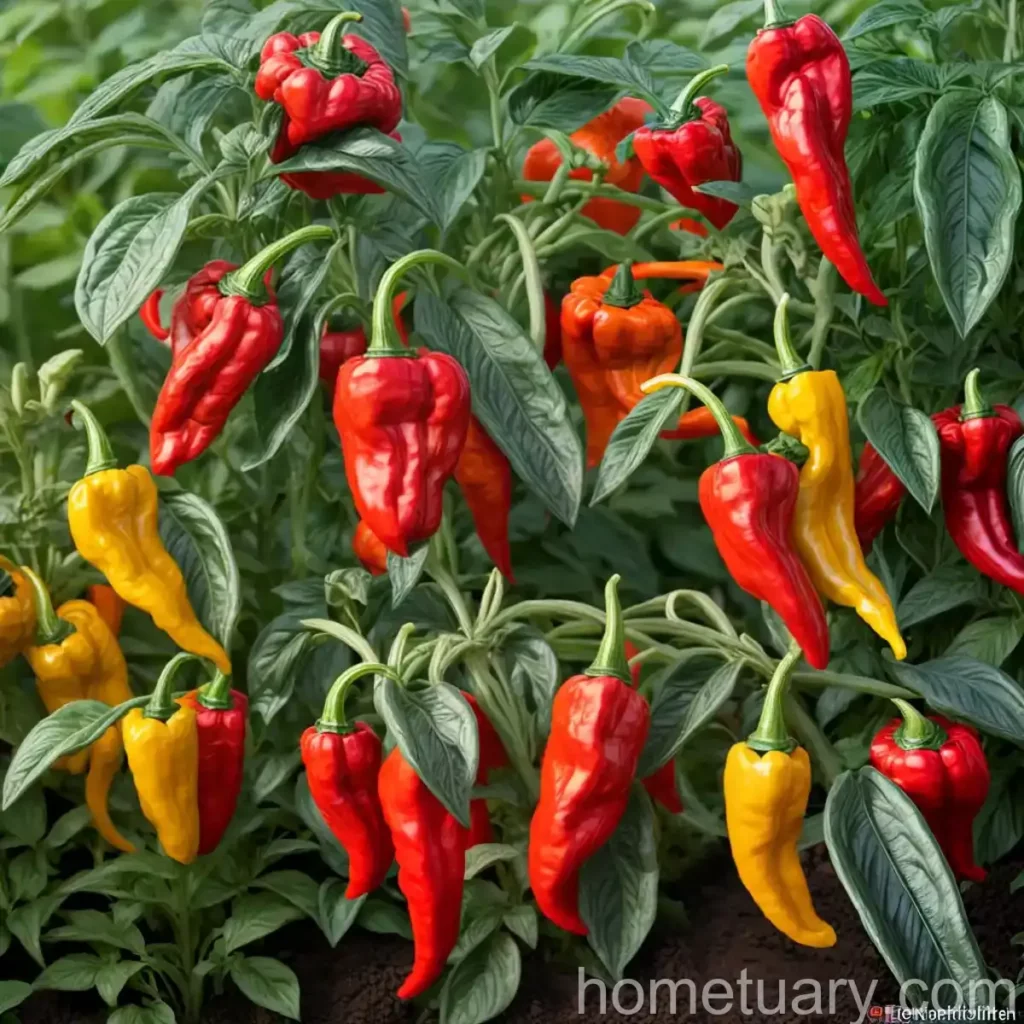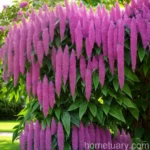Ornamental Pepper (Capsicum annuum ‘Chinese Five Color’)
Ornamental peppers are not just a treat for the taste buds but also for the eyes. They add a pop of color to any garden or indoor space, making them an attractive addition to any plant collection. The Capsicum annuum ‘Chinese Five Color’ variety is particularly noteworthy for its stunning display of fruits that change color as they ripen, creating a vibrant spectacle of red, orange, purple, yellow, and cream. In this comprehensive guide, we will delve into the cultivation, uses, care, and propagation of the ornamental pepper plant, with a specific focus on the ‘Chinese Five Color’ variety. Whether you are an experienced gardener or just starting with ornamental plants, this guide will equip you with the knowledge needed to nurture these striking plants to their full potential.
What is Plant: Ornamental Pepper (Capsicum annuum ‘Chinese Five Color’)?
Ornamental peppers, scientifically known as Capsicum annuum, are a visually striking variety of peppers that are grown primarily for their aesthetic appeal rather than for culinary use. Capsicum annuum ‘Chinese Five Color’ is a specific cultivar that produces small, round fruits that mature through a range of stunning color variations. This ornamental pepper plant not only adds beauty to gardens and indoor spaces but can also be utilized in landscaping for its ornamental value.
Key Takeaways – Ornamental Pepper (Capsicum annuum ‘Chinese Five Color’)
Culture
- Scientific Name: Capsicum annuum ‘Chinese Five Color’
- Common Name: Chinese Five Color ornamental pepper
- Family: Solanaceae
- Origin: China
- Type: Ornamental, perennial in suitable climates
- Mature Height: 18-24 inches
- Mature Spread: 12-18 inches
- Growth Rate: Medium
Uses
- Ornamental: Ideal for adding a colorful pop to gardens, containers, or indoor spaces
- Landscaping: Suitable for incorporating into landscaping designs for visual interest
- Seasonal Décor: Fruits can be dried and used in decorative arrangements
Water
- Watering Needs: Regular watering, allowing the soil to slightly dry between waterings
- Drought Tolerance: Moderate
Sunlight
- Light Requirements: Full sun to partial shade
- Optimal Light: 6-8 hours of direct sunlight daily
Fertilizer
- Fertilization: Apply a balanced, water-soluble fertilizer every 2-3 weeks during the growing season
- Soil Amendments: Incorporate organic matter into the soil before planting
Soil
- Soil Type: Well-draining, fertile soil
- pH Level: 6.0-6.8
- Soil Moisture: Consistently moist but not waterlogged
Pruning
- Pruning Needs: Limited pruning required, mainly for shaping and removing dead/diseased foliage
- Pruning Technique: Use clean, sharp pruners to make precise cuts
Propagation
- Propagation Methods: Seed propagation, stem cuttings
- Seed Germination: 7-14 days at 70-80°F (21-27°C)
- Cutting Propagation: Use rooting hormone and provide bottom heat for best results
Container Popularity
- Suitability for Containers: Well-suited for container gardening
- Container Size: Choose a container with adequate drainage and room for root development
Container Common Diseases
- Common Diseases: susceptible to root rot, bacterial leaf spot, powdery mildew
- Disease Prevention: Proper watering, well-draining soil, adequate air circulation
Disease Diagnosis
- Signs of Disease: Yellowing leaves, spotted foliage, wilting, stunted growth
- Diagnostic Steps: Monitor watering, inspect leaves for signs of pathogens, and assess soil drainage
Common Pests
- Pest Threats: Aphids, spider mites, thrips
- Pest Control: Monitor plants regularly and use insecticidal soap or horticultural oil as needed
Botanist’s Tips
- Companion Planting: Pair with marigolds for natural pest control
- Seasonal Care: Bring indoors before the first frost in colder climates
- Harvesting Seeds: Allow fruits to fully ripen before collecting seeds for future propagation
Fun Facts
- The ‘Chinese Five Color’ ornamental pepper is not only visually appealing but also produces fruits with varying levels of spiciness, adding an element of surprise to its ornamental value.
- This variety of ornamental pepper is an excellent choice for adding a vibrant touch to holiday decorations, with its colorful fruits serving as natural ornaments.
Links to External Resources
- Ornamental Pepper Plant Profile – The Spruce
- Ornamental Pepper Care Guide – Costa Farms
- Growing Peppers in Containers – University of Maryland Extension
By providing an in-depth exploration of the culture, uses, care, and propagation of the ornamental pepper plant, specifically focusing on the captivating ‘Chinese Five Color’ variety, this guide aims to be a valuable resource for plant enthusiasts and gardeners. Whether used as a striking addition to a garden, a colorful feature in indoor spaces, or as part of decorative arrangements, the ornamental pepper, with its captivating hues, offers an enticing visual spectacle. With a blend of practical care guidelines and insightful tips, readers can enhance their understanding of ornamental peppers and cultivate a deeper appreciation for these stunning plants.















